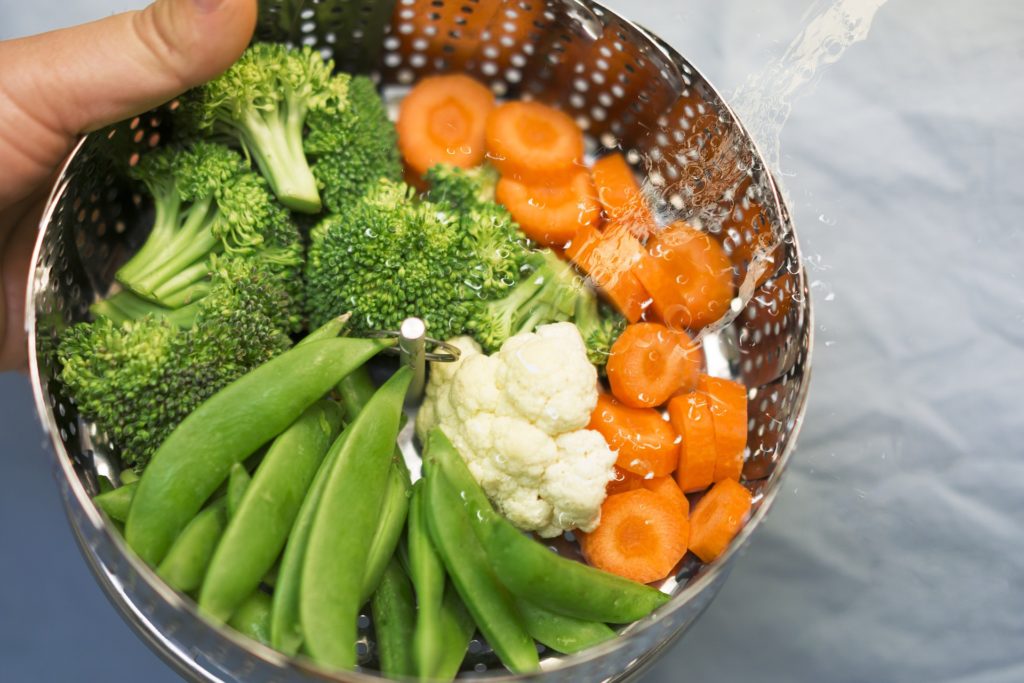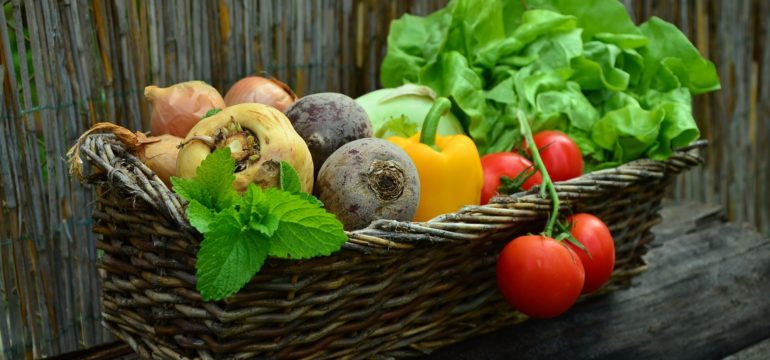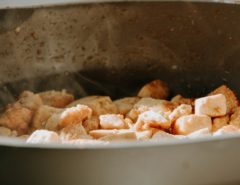By Emanueli Backes
Vegetables have been an important item of the human diet since the very beginning of their existence, and it is not in vain. They are a source of important macro (e.g., carbohydrates, and proteins) and micronutrients (e.g., vitamins, and minerals). In addition, plant foods show high levels of phenolic compounds with several important biological activities, such as antioxidant, anti-inflammatory, antitumoral, and/or antibacterial. These compounds have been reported to have protective effects against cardiovascular, neurodegenerative, and other diseases1,2.
In order to enhance its palatability and taste, people often prepare vegetables through different culinary cooking processes3. However, these processes might induce – in high or low levels – several changes in the physical and chemical composition of vegetables4. Also, the degradation of benefic compounds that are sensitive to the temperature and/or other conditions imposed by the methods might occur2,3, decreasing the content of healthy-desirable compounds5,6.
Various methods can be employed to give vegetables the right taste and texture. Cooking them into hot water (boiling), in vapor heat (steaming), in the oven with hot air, in the microwave, or even frying them in oil are just some of the options.
So, let’s figure out how to make our serving of vegetables as healthy as possible by learning which is the best way to cook them.

Recently Silva et al. (2019) investigated the influence of boiling, steaming, and microwaving methods of cooking on the total polyphenols content (TPC; a class of phenolic compounds) in pumpkin (a kind of squash). It was concluded that the three methods strongly affect the TPC, which decreases by less than half compared to the raw vegetable. However, steaming was capable of maintaining significant-high amounts of polyphenols, compared to boiling, while microwaving demonstrated intermediated behavior.
In another research, the same previous cooking methods were investigated for Turkmen et al. (2005). All the methods cause significant losses in leek’s TPC. Steaming and microwaving were less aggressive, retaining 85% and 82% of the raw leek TPC, against only 64% of boiling. However, results also show that the food matrix plays an important role in the TPC level of alteration during cooking, since for squash and peas it does not show significant differences among the three methods.
When beetroot was investigated by Ramos et al. (2017), some interesting remarks were stated. While boiling, pressure, and oven-baking cooking techniques all decrease beetroot TPC, steaming was able to increase it. According to the authors, it may be explained by the extraction of phenolic compounds that happened from the cellular matrix of the vegetable that occurs during cooking. Similar behavior was reported for Turkmen et al. (2005), where TPC of pepper, green beans, and spinach increases after all boiling, steaming, and microwaving processes. Amazing, don’t you think?

Photo by ImagesBG from Pixabay
A similar study evaluated Quinton (a wild plant with edible foliage) Vitamin C content before and after boiling and steaming. Although both cooking treatments led to significant changes in Vitamin C content, the boiled samples showed the largest degree of degradation, reaching values 79% lower than the crude foliage.
Notice that cooked vegetables usually present lower content of vitamins and phenolic compounds than raw ones. In fact, the processing might affect not only its content, but also activity, and bioavailability. This results from the fact that the part of these components is unstable at high temperatures, and exposure at a sufficient level can destroy them.
Actually, it is important to state that many other factors affect the changes (whether beneficial or not) observed in vegetables rather than the cooking method. The time, and temperature treatment binomen, food matrix, and slice size are just some of them6. Such as what happened with the steamed beetroot, sometimes the cooking process leads to gains in phenolic content. This is because some of them are trapped in the fiber of the vegetable, which is broken down during cooking by releasing them out of cell walls for easier absorption.

However, among the majority of the works available, it was possible to observe a pattern with boiling as one of the most aggressive ways of cooking. Besides the high temperatures, a well-accepted explanation for this fact is because during cooking the vegetables are immersed in hot water, resulting in the desired compounds leaching into the water. On the other hand, steaming can be considered a “soft” technique –as you could observe from the data shown – with a high capacity of retaining the bioavailability of the vital content of vegetables8.
Generally, the method people chose to cook their vegetables is based much more on taste preferences rather than retention of nutrients and health-promoting compounds8. However, you must be aware that there is not a pattern, while some vegetables decrease, others might increase in their health-desired compounds. Luckily, there are some measures that you can take in order to protect these compounds from the cooking process, such as cooking the vegetable with peel; avoid cutting them into small pieces; and do not let them cook for too long. Following these guidelines will help you optimize the vegetables in your diet!
References
[1] Pongener, A., Sharma, S., Purbey, S.K. Heat Treatment of Fruits and Vegetables. (2018). In: Postharvest Disinfection of Fruits and Vegetables. Elsevier Inc.
[2] Juániz, I., Ludwig, I.A., Huarte, E., Pereira-Caro, G., Moreno-Rojas, J.M., Cid, C., De Peña, M-P. (2016). Influence of heat treatment on antioxidant capacity and (poly)phenolic compounds of selected vegetables. Food Chemistry.
[3] Kamalaja, T., Prashanthi, M., Rajeswari, K. (2018). Effect of cooking methods on bioactive compounds in vegetables. International Journal of Chemical Studies.
[4] Adefegha, S.A., Oboh, G. (2011). Enhancement of total phenolics and antioxidant properties of some tropical green leafy vegetables by steam cooking. Journal of Food Processing and Preservation.
[5] Silva, M. F. G., Sousa, P. H. M., Figueiredo, R. W., Gouveia, S. T., Lima, J. S. S. (2019). Cooking effects on bioactive compounds and sensory acceptability in pumpkin (Cucurbita moschata cv. Leite). Revista Ciência Agronômica.
[6] Ramos, J. A., Furlaneto, K. A., Mendonça, V. Z., Mariano-Nasser F. A. C., Lundgren, G. A., Fujita, E., Vieites, R. L. (2017). Influence of cooking methods on bioactive compounds in beetroot. Semina: Ciências Agrárias.
[7] Turkmen, N., Sari, F., Velioglu, Y. S. (2005). The effect of cooking methods on total phenolics and antioxidant activity of selected green vegetables. Food Chemistry.
[8] Mehmood, A., Zeb, A. (2020). Effects of different cooking techniques on bioactive contents of leafy vegetables. International Journal of Gastronomy and Food Science.

Emanueli Backes | Linkedin
SMF Blog Writer
Emanueli is a Brazilian enthusiastic for food science and technologies. Backes graduated with a degree in Food Engineering and Masters in Quality and Food Safety. She is now pursuing her PhD in Food Science. Backes research focus is on organic synthesis of new antioxidant compounds through enzymatic reactions.
Emanueli loves education and science popularization; she believes everything can be demystified, uncomplicated, and taught.






Leave a Reply